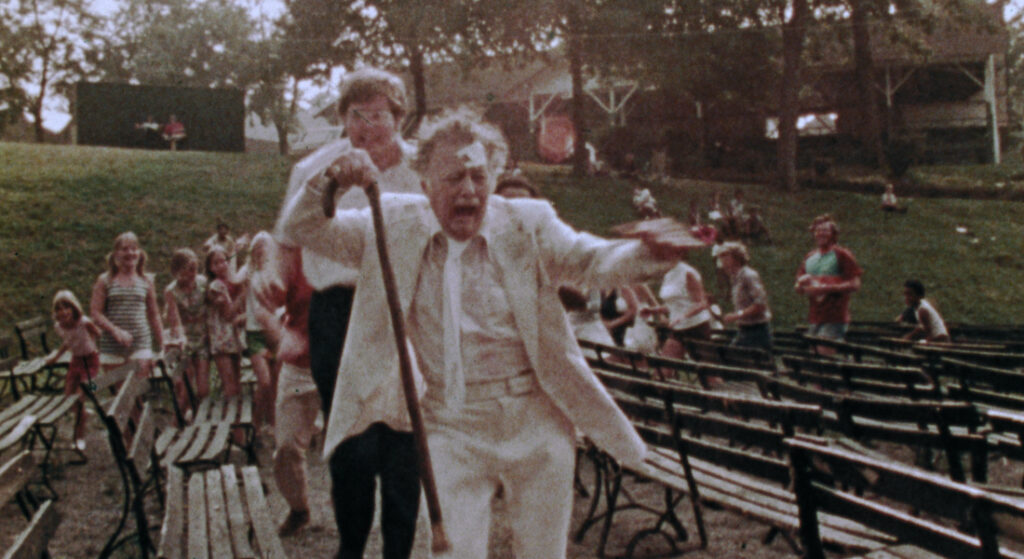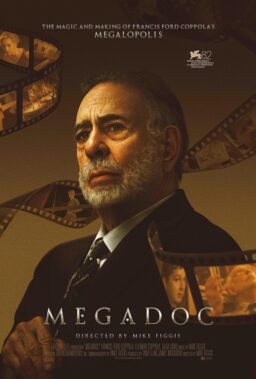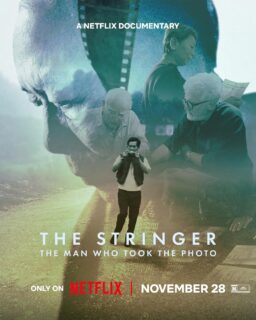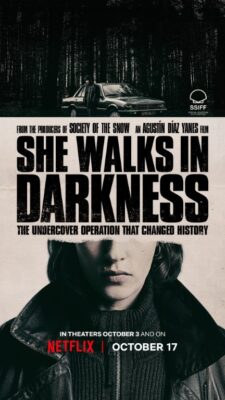Suzanne Desrocher-Romero, widow of legendary filmmaker George A. Romero, is making it her mission to ensure her husband is remembered for more than just his groundbreaking zombie films. Recently, she unearthed a lost movie of his, a PSA commissioned by the Lutheran Society for Senior Life about the plight of the elderly, titled “The Amusement Park.” Once the charity saw the work, they rejected it and the film was never seen, until now. Beginning today, June 8, Shudder will be streaming Romero’s rediscovered film with a 4K restoration by IndieCollect. You can read Scout Tafoya’s four-star review of the film here.
Currently, Suzanne is working to restore Romero’s 1961 debut short, a 21-minute silent film that has never been seen. It will be titled “Romero’s Elegy” and she hopes it will be on the festival circuit later this year. Speaking from Toronto, Desrocher-Romero told RogerEbert.com about the restoration process for “The Amusement Park” and reconnecting with her late husband’s work.
Can you take us back to the beginning? I know the Lutheran Society hired George to make this film. What can you tell us about the production, pre-production, etc.?
It was a $37,000 budget. It was, as George would say, “a three-day bing-bang-boom.” Walton Cook wrote a script, but it was very … there’s not much dialogue in the film, as you know. It’s a very thin script. He was hired and Lincoln Maazel was the only Guild member, so he had to be paid. As it turns out, after it was shot and put into the can, he donated his fee back to the film, so it was a very lovely gesture. Lincoln died at 103 years old. I’ve spoken to his grandchildren who said he loved a beautiful, long life, so that’s great. When I went to try to find another print, my print was terrible. So, I called the Lutheran Society and hoped they had a print. But they had no record of the film. They had no record of it being commissioned. Zero! We did find another print. It was worse than mine, so we ended up using the one I had. IndieCollect did the best they could. They performed miracles, because it was a disaster. Frame-by-frame, they fixed it and then it was getting all my ducks in a row to see if I could get this film out, because I thought it was an important film to have, you know, exposed for A) Romero and B), the subject matter, which is terribly important.
And after the film was rejected, initially, did George ever try to figure out a way to put it on a DVD as an extra or anything like that?
No. Never even thought of it. It was a nothing to him. It was just a PSA, an industrial that he did. Even the commercials that he did, the Calgon, people saw them and enjoyed watching those commercials, but again, he never mentioned it in any of his interviews that I was involved with. He never mentioned it. So to my surprise, here was this film! And at 51 minutes, it’s not a feature, so to speak, but wow, what a surprise.

I gotta think it would pair nicely with “Martin,” which is also a hard movie to find for a lot of people, especially with the Lincoln Maazel connection.
Sure, it would be great. But at the same time, Richard P. Rubenstein is the owner of both “Dawn of the Dead” and “Martin” and he keeps both those films quite tight to his vest. It’s like the Disney vault. He just keeps it away.
I did manage to pick up that gigantic “Dawn of the Dead” 4K set that has the novel that George co-wrote, so that’s like another lost re-discovery of his. In another interview, you said you would make it your mission to have George’s undiscovered work be discovered and it looks like that it’s really happening, which is wonderful.
It is wonderful, I have to say. I’m so glad he is front-of-mind for a lot of people who are Romero fans and I feel like my job has been done and I hope to do more. I just think that part of his legacy is to unbox him from the box that he was in and to have him be discovered as an artist, not so much as a zombie director, even though there is nothing disparaging about that statement. Because I think it’s fantastic. I just want people to understand that there were other layers to him. I find it interesting that people are starting to discover him in a much larger context. Maybe a lot of people haven’t seen “Martin” or certainly have not seen “Bruiser” or “Knightriders.” And maybe it’s time for them to take a look at these films and take a look at his artistry.
I’ve been going back and looking at some of those. “Knightriders” was especially an eye-opener. I haven’t seen that film since I saw bits of it on cable when I was a kid. It was like an early Jonathan Demme or Robert Altman movie, which is not what I was expecting. It was such a wonderfully affectionate film.
Yeah. And it was a film he enjoyed doing. It was such a wonderful family, a team. They had some hardships, but they trooped on and it was a nice experience for a filmmaker, for sure.
So, can you tell me more about the actual filming of “The Amusement Park”? Were there any stories about working with the extras or getting permission to film at the park?
Well, Westview Park was donated to the film, so they were able to have the park for three days, but it was a working amusement park. It was sort of like the same situation with “Dawn,” where they had the mall, so they shot at night, but then there was retail opening at nine o’clock, so they had to be out. This was a very quick thing. Everyone was a volunteer, except for Lincoln and George. They were both paid. Also, when I first saw it, it was obvious to me the way it was cut and shot, that it was a Romero. To me, it oozed Romero. I could see future films in it as well. I could see “Dawn” there, with the motorcycles and all that. The fact that he used a white room and then have the amusement park that’s supposed to be a wonderful day, a wonderful experience, turns out not to be. I know there are a few quotes that say “this is the scariest movie Romero ever made.” I may actually have to agree. It’s a very scary film because it’s relatable. It’s human. You know, we’re all gonna age and we hope that we fare better somehow.

It definitely registers as a scary movie on that level. Also, because he was doing a lot of documentary work during this period, it has a documentary feel to it.
It does.
You feel like you’re eavesdropping in on these scenes in what is supposed to be a conceptual piece. You’re just thrown into this whirlwind of despair and rejection of your existence. Like, this is real life!
It is real life. And it’s funny, because if you’re rich, like that rich guy (character in the film), he’s having a fun time at the amusement park. It’s the people who have no money, who have no socio-economic issues that are forgotten. So, he’s making a point there. And Lincoln is lovely in this film.
How did they find him?
You know, I don’t know. Because George liked to work with the same people. He had his repertoire, or his troupe, often were the same people. So, when he made “Martin,” he thought of Lincoln right away. But I’m not sure how he met Lincoln.
And has Lincoln’s family seen the film?
Yes, his grandchildren. I tried to find them early on, with no success. Then finally, one of his grandchildren saw an advertisement, a trailer, and then approached us and said, “Hey, this is our grandfather. We didn’t know about it. We knew about ‘Martin,’ of course, but have not heard of this film, and can we get a copy?” And we were thrilled. We were so excited to show them this film.

What do you think the Lutheran Society was thinking? It seems like they wanted a movie about how the elderly are mistreated, and they definitely got that from this film, but did they want a nice version of how the elderly are mistreated?
I don’t know, but I think they found it a little edgier than they would have liked. And people have said to me, “Well, Jesus, if you hire Romero, you’re gonna get edgy!” At the time, he hadn’t yet established—he had only done “Night of the Living Dead,” which is obviously edgy, creepy, but that doesn’t mean he would necessarily spend the rest of his career being that guy. As it turns out, though, as I was talking about that box. So, yeah, I think they were surprised, but what I think is more incredible is, once I had this film, I showed it to the students at the University of Pittsburgh in the gerontology department and asked them their opinion. They too found it edgy and disturbing and they didn’t like it. They thought, “No, this is not the right message. This is not how this message should go out.”
Were there any challenges with the restoration process? Any technical hurdles to overcome?
Well, it was a mess, no doubt about it. My copy was the best of the three, but it was warped. It was ripped, scratched, faded. It was all those things. First of all, technology today is astounding. You know, they have such great equipment. It was painstaking. It was frame by frame by frame. I would come in and oversee or take a look at how it was coming along. Sound was separate from the actual picture, so we needed to work that out. There was a piece of music that we couldn’t find, so we couldn’t get it licensed, so we had to use something else. So, yeah, there was some stuff to go through with the process, but they did such a terrific job. Of course, I see every scratch, every fade, but you know, it’s patina. It’s 1973. It’s not hi-res. So, we just have to get over it.
I’m wondering if you could give me a window into what this was like for you as a personal journey, of rediscovering your husband’s life’s work.
It’s a labor of love. I’ve said this story before, but when we were playing Scrabble about five weeks before he passed, I asked him what he thought his legacy was and he said, “Ah, nobody really cares.” And I thought, Oh my God. I have to say it disturbed me big time. I didn’t say anything at the time and then he passed and I kept hearing those words. It gave me the push to prove him wrong. So, that’s what I’m doing. I’m proving him wrong. [laughs] Every day, I’m proving him wrong, because I do think people care. I do think that I would like to take him out of that box and have him seen as a filmmaker, an artist, an American artist, someone who had a voice, someone who had something to say and who used film to say it.
One last question: are there any organizations or messages you would like to have out there that pertain to the subject of this film?
I just say, don’t dismiss people like that. It’s the same thing with women, too. Once your beauty fades, you get dismissed and become invisible. We’re such a youth-oriented society. So, everything is about young and youth. Everybody has value. We need to understand that, especially when they’ve had a whole lifetime of giving, and suddenly nobody wants to take anymore. It’s discouraging. So I say, look at your community, look at the foundations and look at the programs like Meals On Wheels and offer your support. You know, this pandemic really did shine a light on how poorly we do here in this department. I know in Canada, it’s been disgusting, to be honest. I can’t imagine it isn’t that way in the United States as well.
Yeah, I think in 2020, there were, like, five Romero movies right there with everything that was happening. And we all miss his voice, so I hope we can keep discovering his work.
It’s like comfort food, right?
Yeah, comfort food that’s designed to make you feel uncomfortable.
[laughs] Yes, exactly right!
“The Amusement Park” is now playing on Shudder.












